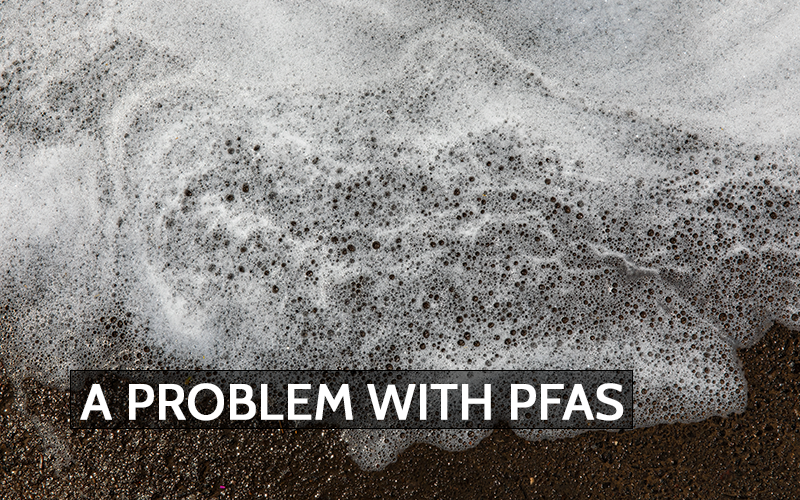Per- and polyfluoroalkyl substances (PFAS) are synthetic chemicals that have garnered increasing attention due to their pervasive presence and potential health risks. Known as “forever chemicals” due to their resistance to degradation, PFAS are found in numerous consumer products and industrial applications. Their prevalence in air quality monitoring has emerged as a critical focus for environmental scientists, as airborne PFAS can contribute to widespread contamination. This article delves into what PFAS are, why they are prevalent in air quality monitoring, and the sources responsible for their dissemination into the atmosphere.
What Are PFAS?
PFAS encompass a large group of man-made chemicals, including perfluorooctanoic acid (PFOA), perfluorooctane sulfonate (PFOS), and GenX. These compounds are prized for their unique properties, such as resistance to heat, water, and oil, which have made them indispensable in industries ranging from textiles to electronics. However, their durability also poses environmental challenges. PFAS do not break down easily in the environment or the human body, leading to bioaccumulation and long-term exposure risks.
The health effects of PFAS exposure include potential links to cancer, thyroid disorders, liver damage, and immune system suppression. Their widespread use and persistence have earned PFAS a reputation as an environmental and public health concern.
Why Are PFAS Relevant to Air Quality Monitoring?
Air quality monitoring has traditionally focused on pollutants like particulate matter (PM), nitrogen oxides (NOx), and volatile organic compounds (VOCs). However, PFAS have emerged as a significant concern due to their ability to travel through the air and settle into soil and water, creating a pathway for environmental contamination.
Studies reveal that PFAS can exist in gaseous or particulate forms, making them particularly challenging to detect and monitor. Once airborne, PFAS can travel long distances, depositing in remote areas far from their original source. This mobility underscores the need for advanced air quality monitoring technologies capable of detecting these elusive contaminants.
Moreover, the interaction between PFAS and existing air pollutants can exacerbate their environmental impact. For instance, PFAS can adhere to PM, allowing them to remain suspended in the air for extended periods. This synergy makes PFAS monitoring an integral part of comprehensive air quality assessments.
Sources of Airborne PFAS
The sources of PFAS in the air are diverse, reflecting their widespread use across various industries and consumer products. Key contributors include:
1. Industrial Emissions
Manufacturing facilities that produce or use PFAS are significant sources of airborne contamination. These industries release PFAS during processes such as chemical production, metal plating, and the fabrication of nonstick coatings. For example, the fluoropolymer manufacturing process can emit substantial amounts of PFAS into the atmosphere.
2. Waste Incineration
The incineration of PFAS-containing waste is another major contributor. While high-temperature incineration is intended to destroy hazardous chemicals, studies indicate that incomplete combustion can release PFAS into the air. Municipal waste, industrial by-products, and even household trash containing PFAS-treated items can contribute to this problem.
3. Consumer Products
Everyday items treated with PFAS, such as water-resistant clothing, nonstick cookware, and stain-resistant carpets, can release volatile PFAS compounds into indoor and outdoor air. Over time, these emissions accumulate, particularly in poorly ventilated areas.
4. Firefighting Foams
Aqueous film-forming foams (AFFFs), commonly used for firefighting, are a well-documented source of PFAS contamination. When used in training exercises or actual fire suppression, these foams can aerosolize and release PFAS into the air.
5. Atmospheric Transport
Beyond direct emissions, PFAS can undergo atmospheric transport through evaporation from water sources or volatilization from contaminated soils. This secondary pathway contributes to their presence in air far removed from the original point of release.
Challenges in Monitoring Airborne PFAS
Detecting PFAS in the air poses several challenges. These chemicals exist at trace levels, often requiring highly sensitive and specific analytical methods. Advanced techniques such as high-performance liquid chromatography-tandem mass spectrometry (HPLC-MS/MS) have been employed to identify and quantify PFAS, but these methods are resource-intensive and not universally available.
Additionally, the diversity of PFAS compounds complicates monitoring efforts. With thousands of known PFAS variants, creating comprehensive detection systems remains a formidable task. Regulatory frameworks for PFAS monitoring are still evolving, further hindering standardized assessment protocols.
Implications for Public Health and Policy
The presence of PFAS in the air should alert us to the urgent need for robust regulatory action and technological innovation. Policymakers are beginning to recognize the need for stricter controls on PFAS emissions and better waste management practices. For example, the U.S. Environmental Protection Agency (EPA) has introduced guidelines for PFAS monitoring and reduction strategies.
For public health, understanding and mitigating PFAS exposure is critical. Efforts to reduce airborne PFAS include improving industrial emission controls, transitioning to PFAS-free alternatives, and enhancing waste management practices. Increased funding for research and development in air quality monitoring technologies will also play a pivotal role in addressing this issue.
PFAS represent a unique challenge in air quality monitoring due to their persistence, mobility, and widespread use. Their presence in the air, whether through direct emissions or secondary transport, shows the interconnectedness of environmental compartments and the need for holistic monitoring approaches. As awareness grows, the scientific community, policymakers, and industry stakeholders must collaborate to mitigate PFAS pollution and safeguard public health.
By prioritizing research, regulation, and innovation, society can move closer to addressing the complexities of PFAS contamination and ensuring cleaner air for future generations.
Related Articles:
How the United States Deals with Dust
References:


